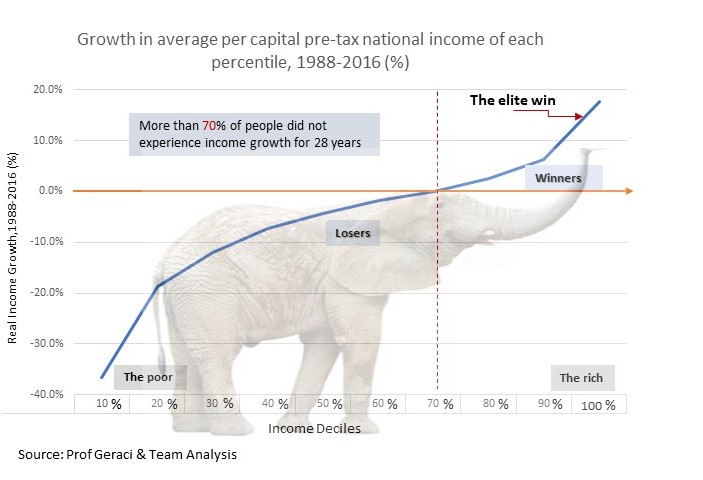The polarization theory says that wage growth occurs both for the highest and lowest income brackets, but with the simultaneous decrease in wages for the middle class. Unfortunately, the reality is worse.
This study by Daniel Oesch, Giorgio Piccitto, belies the polarization theory, but for the wrong reason: instead of denying the collapse of middle-class wages, it proves that even the lower-income classes are losers.
On the one hand, polarization leads, in fact, to a divisive situation, with the winners at the top and bottom, and the losers in the middle. Notwithstanding that the collapse of the middle class is a tragedy for a country’s society and economy, the growth in wages of the lower classes would have mitigated the income disparities between rich and poor.
Instead, the study, even more dramatically, tells us that while the middle class continues to die out as predicted, even the lower classes also lose. In summary, only those who are at the top win. Data that exactly match my analysis published a few weeks ago, where I adapted Milanovic’s Elephant for Italy.

In a clear and dramatic way, in the last 30 years, 70% of the Italian population has suffered a drop in living standards (35% losses for the poorest income brackets), and only the remaining top 30%, has had a increase, but modest. Of the winners, the top 10% instead has seen increases between 10% and 20%.
The so-called elite, Winner-Takes-It-All, which is not only an ethical and equity problem, but above all an economic one: the growing disparity in income and concentration of wealth is one of the most important obstacles to the overall growth of our country, because it decreases the average propensity to consume, consumption trend that is, indeed, not good in Italy.
